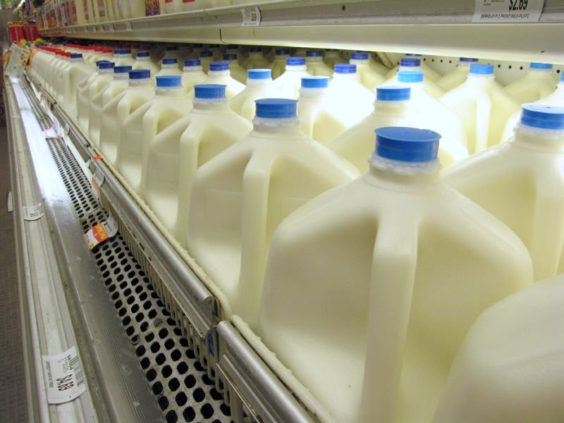If you found it hard to follow the “fiscal cliff” story, you may have been too weary to try to wrap your head around the related “milk cliff” story – though the shorthand was a bit easier to understand: the price of a gallon of milk will double overnight!
Thankfully, that won’t happen this year. But there’s always next year.
As part of the fiscal-cliff deal that finally passed both houses of Congress yesterday, lawmakers also passed a temporary extension of the current farm bill, which expired at the end of 2012. Without it, government policy would revert to provisions in the Agricultural Act of 1949, which uses an outdated formula to calculate government milk subsidies that help support a minimum price for milk. Under that law, the government would be forced to pay a rate that could push the price you pay for a gallon of milk up to about $7 (though some shoppers in Canada might consider that a bargain).
The temporary extension basically kicks the can to the end of this year, by which time Congress will either need to pass a new comprehensive multi-year farm bill, extend the old one again, or risk doubled milk prices again by doing nothing.
So if the farm bill keeps prices low, why are there competing forces that aim to keep prices high? One of the most common questions among couponers is why there are so few milk and dairy coupons – and why some states don’t allow them at all.
Many states restrict retailers’ ability to sell milk at less than cost, essentially preventing them from using milk as a loss leader. Otherwise, dairy farmers have argued, retailers could drive prices below the farmers’ production costs, and make consumers less willing to pay the regular market price. Such laws disallow deep price cuts and even coupons, since that could result in retailers selling milk for less than they paid for it. Other states allow such promotions, but only if milk dealers can prove they’re not selling milk below cost. In Massachusetts, for example, anyone who wants to issue a milk coupon has to fill out a government form and demonstrate that “the use of coupons shall not result in the sale of milk at a price that is below the cost of production.”
Rarely, though, you will see high-value coupons – even free milk coupons, when “free” is clearly below cost. The National Dairy Council has offered such coupons before. But its goal is not to benefit any particular retailer or producer, just to promote the general consumption of milk. So that’s ok. Other coupons have regional restrictions. Some say they’re not valid in certain states, some are offered by milk producers whose products are only sold in certain states, and some – as in the case of the United Dairymen of Idaho coupons that occasionally appear on Coupons.com – are valid “only in Idaho and Utah” and found only under those states’ zip codes.
Even without coupons, milk prices are generally lower in places like Walmart and ALDI, for the same reason that most prices are lower there – in Walmart’s case, volume; in ALDI’s case, low overhead and high turnover. As long as they’re not selling milk for less than they’re paying to stock it, in states where such laws exist, their low prices are no problem.
So be grateful that you can run out and buy a gallon of milk today for somewhere around the national average of $3.50 or so, instead of $7. But now you know why you’re not regularly paying much less.














